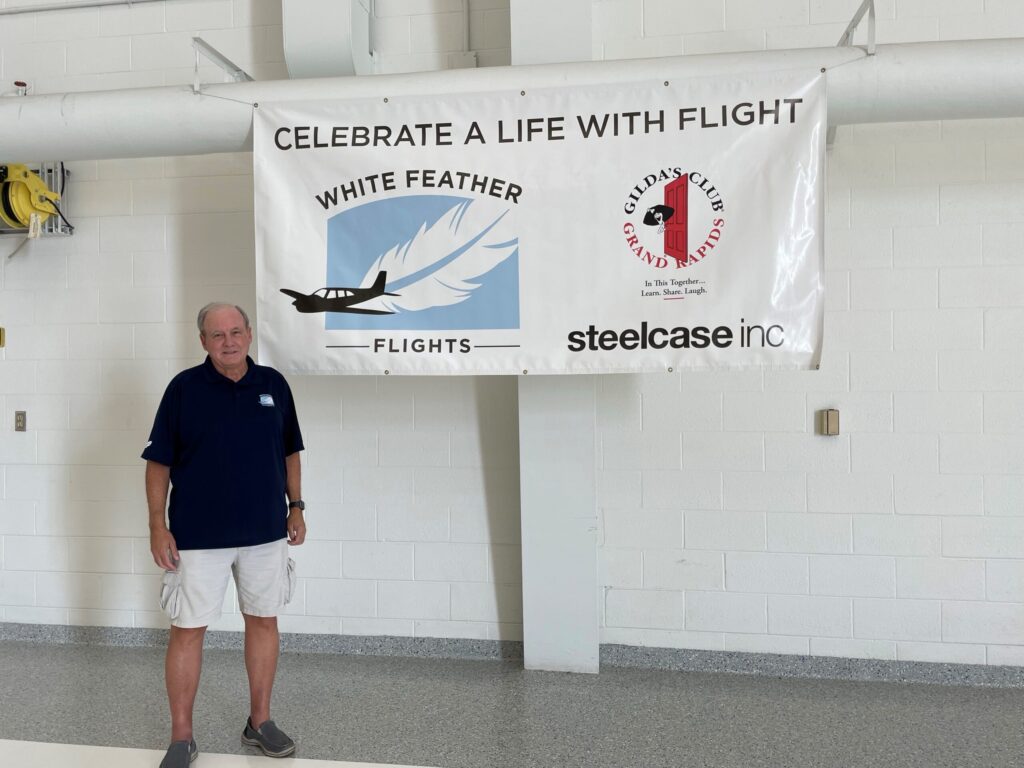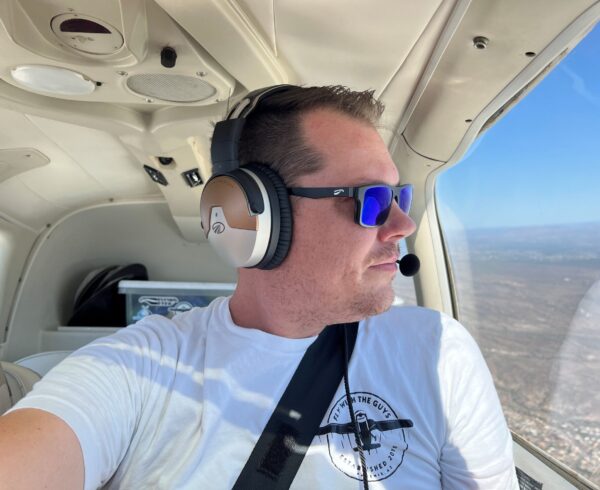For many volunteer pilots, flying for compassion is an avocation. For a few, such as Jim Hesseman, promoting volunteer aviation has also become his mission. For the last twenty years, Hesseman has brought his piloting skills, his professional skills, and his compassion to the aid of hundreds of passengers and to multiple volunteer aviation organizations. When he’s not aloft flying medical patients or supplies, adoptable animals, or grieving families in memory of a loved one, he’s working to promote volunteer piloting and to help connect pilots and the people who need them.

Hesseman took an aviation course when he was an undergraduate at Miami University in Ohio, and he got his pilot’s license in 1972. He says getting a license was a lot cheaper then, but as a new college grad, flying was not in his budget. He got busy with a 30+ year career with furniture manufacturer Steelcase, and he didn’t fly again for a number of years. Finally, work brought him to Grand Rapids, Michigan, where Steelcase is headquartered, and he got back into flying, first with an equity position in a flying club that owned a Cessna 172, then a Grumman Tiger. Since 2012, he’s had a 1979 Beech Bonanza. About twenty years ago, he began flying as a volunteer pilot. He says, “At some point, you come to the realization that it’s time to start giving back with the tools that you have, and for some of us, that’s airplanes.”
When he first got back into flying, Hesseman wasn’t aware of the option of “public benefit flying,” the Air Care Alliance (ACA) term for volunteer piloting. But he had a pilot friend who was paraplegic who ran an organization called Dreams and Wings, a non-profit that provides volunteer flights to inspire and empower kids with special needs and challenges. Hesseman and his wife supported the group’s events in Grand Rapids and around Michigan for years. One year, there was a Dreams and Wings event, hosted at the University of Michigan Cancer Center in Ann Arbor, that gave flights for kids affected by cancer. A couple approached a pilot who had given a flight to their little girl the year before, which she had loved. During the year, they had lost their daughter to cancer, and they asked if the pilot would give them a ride to remember that happy day with her. Hesseman says, “At the end of the day, the pilot took them up, and during the flight, the mother pulled out a big white feather with the girl’s name on it and asked if they could release it during the flight. Of course, the pilot said ‘Sure.’” During the next year’s Dreams and Wings event, 4 or 5 more families showed up asking if they could also have memorial flights. At that point, Hesseman and his friends recognized a need. The next year they organized a separate White Feather Flights event, and 30 families showed up to decorate feathers, remember their loved ones, and release white feathers from the air. Hesseman was also on the board of a cancer and grief support group called Gilda’s Club in Grand Rapids, so that group decided to organize a White Feather Flights event in Grand Rapids. A few years ago, they created the White Feather Flights website to help grief support organizations and pilots around the country coordinate flights for grieving families.
“If you have the compassion to help people, then you should ask yourself ‘What tools or skills do I have?’ If you know that you want to help and you have access to an airplane, then it’s a perfect combination. It’s fun to help other people with an airplane.”
Jim Hesseman
One of Hesseman’s most memorable missions was at the first White Feather Flights event in Grand Rapids, held in the hangar of Steelcase’s aviation division. “The pilots were excited, as were the families who showed up to decorate their white feathers. Our mission statement is ‘Celebrate a life with flight,’ and this was a celebration. We had games and food and a lovely video about their family members who had passed. And there was a young boy there who had lost his mother a few months earlier. I took him and his father up in my airplane. As we prepared to take off, the father looked at me and said he was a bit nervous. I asked him if he’d ever flown in a small plane before, and he said ‘No, I’ve never flown!’ I told him not to worry, that we’d have fun, and once we got up there, he just loved it. He and his son were enjoying the flight and having a memorable experience. Later, as we were closing up shop, I saw this boy sitting in the lobby of the facility. I asked how he was doing, and he looked up at me and said ‘This has been the best day of my life.’ So right then, I knew this was something that we needed to keep doing.”
While setting up the White Feather Flights, Hesseman turned to Air Care Alliance for information on how to set up a volunteer pilots organization (VPO). “That was the first time I worked with the good people at ACA, and they were very helpful. So, I started to do more work with them.” He joined the board in 2015 and is currently serving ACA as its president, working to make more organizations in need aware that there are volunteer flights available to them, to bring VPO leadership together to share ideas and best practices, and to advocate for VPOs to regulators and industry leaders.



Hesseman has flown for a number of different volunteer pilot organizations over the years: including several medical transportation volunteer organizations and Pilots N Paws. Since moving to the Phoenix area two years ago, he’s flown for Flights for Life, a group that transports human blood products, and the Navajo Christmas Airlift, and he’s beginning to fly for Angel Flight West. He says, “They’re all different, and they’re all very rewarding in their own respect.”
Asked what pilots need to get into public benefits flying, Hesseman says, “First, they need the compassion to help others. If you have the compassion, then you should ask yourself ‘What tools or skills do I have?’ If you want to help and you have access to an airplane, then it’s a perfect combination. It’s fun doing things for other people with an airplane.” He says a lot of volunteers are older pilots who now have both the time and money available to donate flights. “Rather than just writing a check, a lot of pilots would rather go out and donate their time to help people doing something that they really love.” But he also wants to let new pilots know about the possibilities and rewards of public benefit flying. “The sooner younger pilots know, the more they can look ahead to helping others someday. Even if the demands of family, work, time, and money don’t allow it today, they can be thinking ahead to the time when they can fly more and start giving back. They’ll know when it’s the right time.” He adds, “It amazes me how many good people there are out there, men and women, pilots who are doing something every day to help people with their airplanes.”
In November 2024, Jim Hesseman was presented the Public Benefit Flying Award for Outstanding Achievement in Public Benefit Flying at the National Aeronautic Association Fall Awards Dinner in recognition of his contribution as a volunteer pilot and president of the Air Care Alliance, an organization that builds awareness of public benefit flying.
If you’re interested in becoming a volunteer pilot, simply go to the Air Care Alliance website to learn more about the options that are available to you.















Leave a Comment